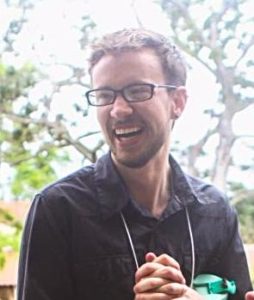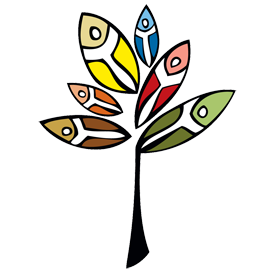
by Asher O’Callaghan
ELM Program Director
If you’ve been following the LGBTQ+ movement during the past few decades, you’ve probably noticed several changes in the language we use. A few decades ago, many would use gay and lesbian to refer to our community. Then bisexual was included creating the acronym LGB. And not too long after that, transsexual was added to the mix, thus LGBT. Now, the word transsexual is usually replaced with transgender, and the letter Q has also been added for queer. Which brings us to LGBTQ—the acronym ELM has often used.
Most of these changes in language have taken place over the course of years and there’s been a lot of deliberation about what language fits and what doesn’t. So with that in mind, we’d like to invite your feedback on the most recent addition we’ve made.
In recent months, some of you may have noticed that we’ve begun using a + at the end of LGBTQ in many of ELM’s publications. The + is meant to symbolize the many queer identities that might not be fully represented by the words lesbian, gay, bisexual, transgender, and queer. Identities like intersex, two-spirit, or asexual, just to name a few. It reminds us to greet the new identities we encounter with open minds. It reminds us of how our language itself is evolving, and how we too are evolving with it.
The point to changing our language isn’t to make people feel uncomfortable and confused. The point is to recognize that language stands for something. The words we use are meaningful. Language is power. Words can actually create possibilities that didn’t exist before.
Take me for example. I can’t tell you how many times I’ve been asked, “How old were you when you knew you were transgender?” Older than you might guess. Because I didn’t become familiar with the word transgender until I was in my 20s. Until then, I simply had never heard a word that described my experience of my gender. When we have no words to express our experiences, we are kept alone and silent.
The internet was the first place I found the word transgender. When I read about the experiences of other trans people, it felt like being named. With one word, experiences I had never been able to express before were affirmed. With one word, my experiences no longer kept me isolated but joined me together with others. In a very real sense, the word transgender made me possible.
These letters stand for something. They stand for people—for POSSIBILITY. Without words to name who we are in the world, we’re left silent and alone with our experiences. We want to celebrate the on-going naming and claiming of new identities in our community. We want to acknowledge that the process of naming and claiming these experiences is part of our DNA as a community.
Does the + help us do that? Ideally, it helps affirm the on-going evolution of queer identities in our communities. However, it may minimize identities like intersex, asexual, or two-spirit by lumping them all into a symbol. We invite your feedback.
For a few high-quality, user-friendly lists of what each of these words (and many others!) means check out these resources:
Lutheran Introduction To Our Lesbian, Gay, Bisexual, Transgender, and Queer Neighbors
 Asher O’Callaghan is grateful for all the ways that visibility gives birth to possibility. He didn’t know he could be a queer Lutheran pastor until he met a queer Lutheran pastor. He’s grateful for all the folks whose public witness as LGBTQ+ faith leaders creates space for queer faith.
Asher O’Callaghan is grateful for all the ways that visibility gives birth to possibility. He didn’t know he could be a queer Lutheran pastor until he met a queer Lutheran pastor. He’s grateful for all the folks whose public witness as LGBTQ+ faith leaders creates space for queer faith.


